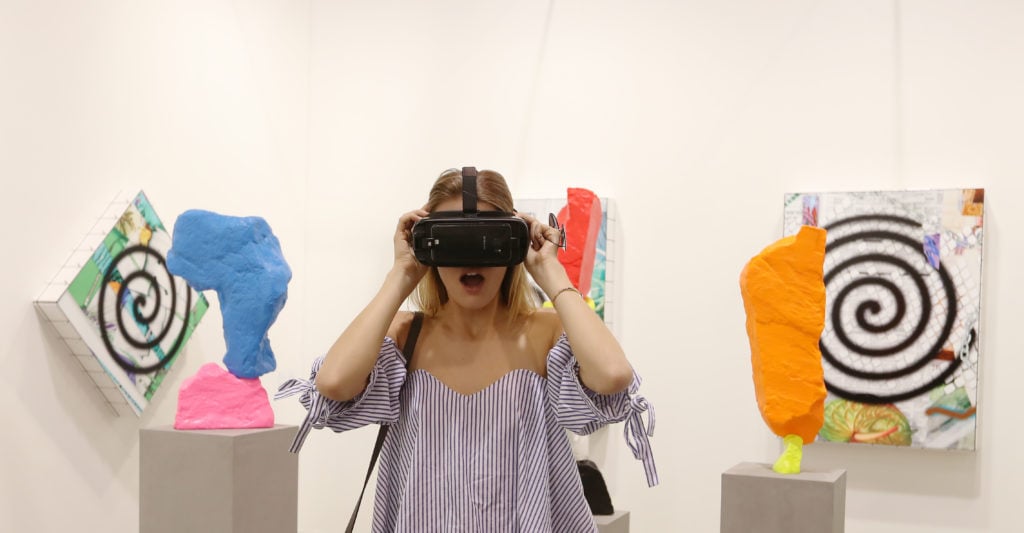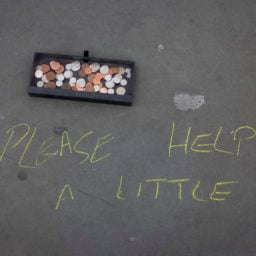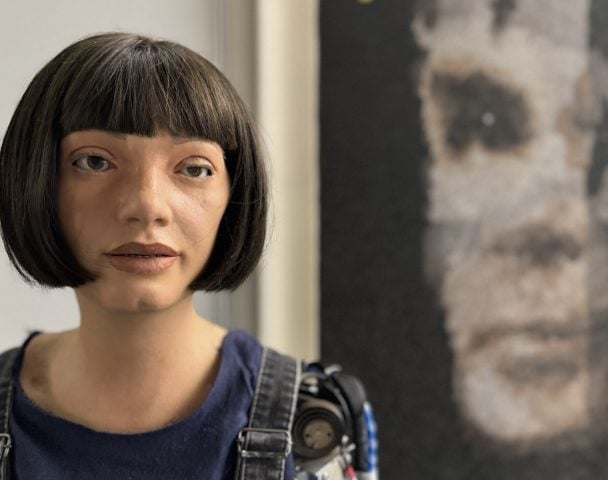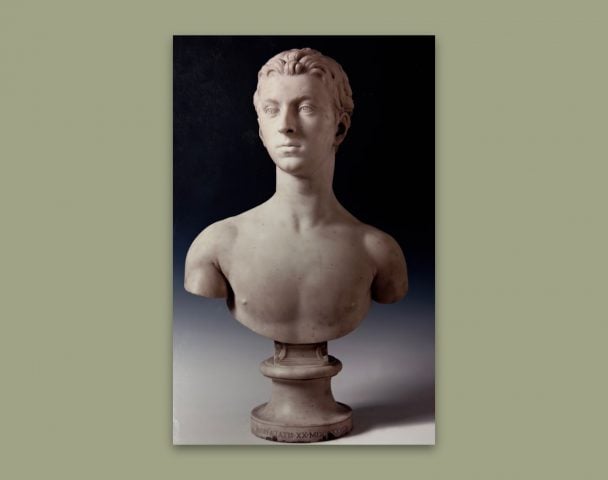Every Monday morning, Artnet News brings you The Gray Market. The column decodes important stories from the previous week—and offers unparalleled insight into the inner workings of the art industry in the process.
For this edition, wading back into the biggest health scare in the (art) world…
PANIC ROOM
This week, fears of the novel 2019 strain of coronavirus—now shorthanded as COVID-19—wreaked a new level of havoc on the global art industry, with a slew of players across sectors postponing or nixing major events in response to the disease. Taken together, the frantic rescheduling now makes it appear as if a mixture of reasonable precaution and borderline paranoia could endanger every event in the foreseeable future.
For perspective, here’s a rundown of how the worldwide art calendar has been reshaped since the cancelation of Art Basel Hong Kong:
In the fair sector, Hong Kong’s Art Central fair, which runs concurrent to Art Basel Hong Kong, was called off the day after the larger fair bowed out. Event organizers canceled Beijing’s Jingart fair on February 21, and Milan’s Salon del Mobile, one of the world’s premier trade fairs for design, was recently pushed back from April to mid-June. The MCH Group, Art Basel’s parent company, also announced on Friday that the next edition of its Baselworld watch fair, the company’s most lucrative trade fair, will be moved from April 30 to late January 2021—a precaution motivated by a Swiss ordinance banning all gatherings of more than 1,000 people until mid-March.
In the auction realm, Sotheby’s geographically and temporally split the raft of sales it had planned for its Hong Kong venue in the first week of April. The Modern and contemporary art auctions will now take place in New York in the middle of the same month, while their once-accompanying sales of jewelry, watches, wine, and Asian art will be held in Hong Kong the week of July 6. Christie’s pushed back its own Hong Kong sales from March to May, and Bonhams postponed its March auctions in the city without confirming when exactly they will be rescheduled. Multiple houses participating in New York’s Asian Art Week (March 12–19) have also delayed their respective sales until June.
Finally, about a month after state officials first closed museums and other public institutions in mainland China and Hong Kong, arts nonprofits outside the region began ducking and covering, too. Last Monday, officials shut down all museums in northern Italy, where 650 cases of COVID-19 had been confirmed by Friday. The same day, the Japanese ministry of culture shuttered museums nationwide for the next two weeks, delaying the opening of a major traveling exhibition of works from London’s National Gallery at Tokyo’s National Museum of Western Art.
In short, the industry is accelerating toward panic mode across all sectors. And the more I look into material on the coronavirus and the world’s reaction to it, I’m increasingly convinced of two things: this episode is not—repeat, not—going to blow over in the next couple of months, and we’re going to learn an awful lot about the art economy’s flexibility (or lack thereof) by the time the state of emergency passes.
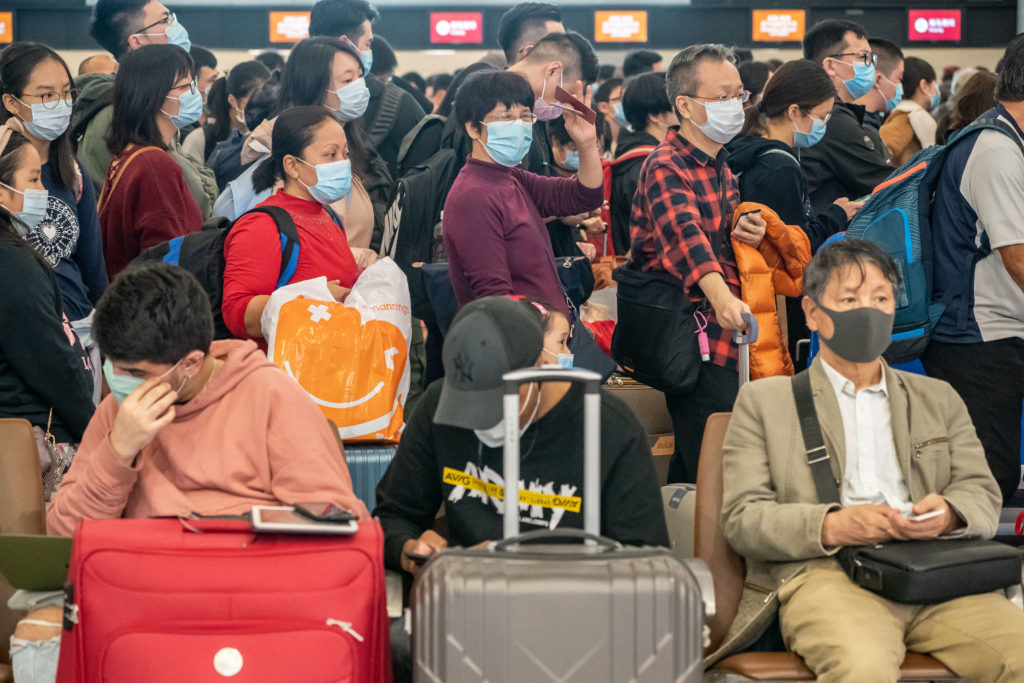
Travelers wearing face masks at the departure hall of West Kowloon Station on January 23, 2020 in Hong Kong. Photo by Anthony Kwan/Getty Images.
REALITY CHECK
Before I go further, let me state this loud and clear: what matters most is that people around the world are getting sick and, in some cases, dying from COVID-19. Just as grave is the fact that many more people are being thrust into positions of harrowing uncertainty about how, where, and whether they and/or their loved ones will be able to get medical care at all, and what the quality of that care will be. This, not the economy (art or otherwise), is where our minds should go first.
And one of the reasons it’s crucial to keep this perspective is that, according to some experts in the medical and public-health communities, most of the global population may not be able to avoid the coronavirus regardless of the measures taken.
I found no better expression of this than in a piece by doctor and journalist James Hamblin, matter-of-factly titled “You’re Likely to Get the Coronavirus.” The good news is the bad news, and vice versa. COVID-19 has a very low mortality rate; the virus has been terminal in less than two percent of confirmed cases to date, with the overwhelming majority of fatalities being elderly patients. Compare that to the avian flu, which emerged in 1997 and killed a terrifying 60 percent of the people it infected, and you get a sense of how much worse this outbreak could be.
On the other hand, it’s precisely because the coronavirus is so mild that it’s already been spread so far, so fast, so covertly. Hamblin describes it this way:
[COVID-19] is deadly, but not too deadly. It makes people sick, but not in predictable, uniquely identifiable ways. Last week, 14 Americans tested positive on a cruise ship in Japan despite feeling fine—the new virus may be most dangerous because, it seems, it may sometimes cause no symptoms at all.
These traits lead us back to Hamblin’s provocative-but-medically-grounded headline. One of his sources, epidemiologist Mark Lipsitch, estimates that 40 to 70 percent of humankind will contract the coronavirus in the next year—but that many of the people who do will weather it without medical care, if they suffer any ill effects whatsoever. And since those people will still be walking around, getting on public transportation, going into the office, etc., the bug will keep getting passed around.
In fact, Lipsitch is part of what Hamblin calls an “emerging consensus among epidemiologists” that COVID-19 will likely live on forever as a “new seasonal disease” that joins the other four commonly contracted coronaviruses, one (or more) of which may already have knocked you out of the office for a few days in the recent past.
Oh, and if you’re banking on a vaccine, don’t hold your breath. Even by the most bullish projections, it would take between 12 and 18 months for a COVID-19 vaccine even to be properly vetted for safety and effectiveness. It would then have to be mass-produced and distributed around the globe, which will take even more time. According to infectious-disease specialist Laurie Garrett, COVID-19 survivors in China haven’t even seemed to develop an immune response to the virus, calling into question whether a vaccine is even viable.
All of which means that the world at large, including the art world, should move past short-term emergency measures like canceling events and onto big-picture questions about how to move forward in a world where we can’t just wait out COVID-19. And companies in other sectors of the economy are already demonstrating the promise of doing so—and the peril of refusing to.
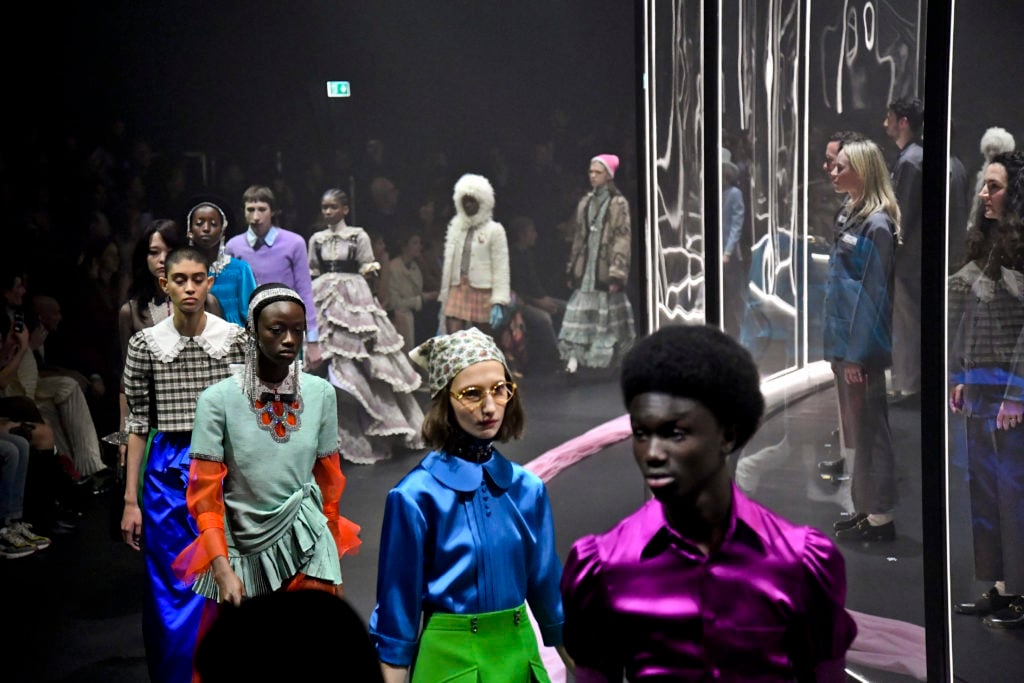
Gucci’s Ready to Wear Fall/Winter 2020-2021 runway show was one of dozens live-streamed during February’s Milan Fashion Week in response to coronavirus-related obstacles. Photo by Victor VIRGILE/Gamma-Rapho via Getty Images.
DIGITAL DASH
Thanks to quarantine measures and other ironclad state edicts aimed at slowing the coronavirus, China is still in the midst of what Bloomberg analysts called “the world’s largest work-from-home experiment.” And this scenario is just as consequential for what it does to consumer behavior as for what it does to the supply side.
Alibaba, the so-called “Amazon of China,” has lost about $28 billion in value in the past six weeks under the threat of COVID-19. Why? First, because buyers have cut back on more expensive purchases in the face of the health scare. Instead, “a lot of the millions of [Alibaba] packages that get delivered every day are cheap items such as groceries and face masks,” according to Zheping Huang and Claire Che in Bloomberg.
But beyond this losing trade-off in customers’ shopping carts, the company’s core competency is the delivery of physical objects through a physical shipping network—a major vulnerability given that millions of manufacturing employees, warehouse staffers, and delivery personnel are still confined to their homes by law, disrupting the supply chain at home and, increasingly, abroad, too.
It doesn’t take visionary imagination to draw parallels between Alibaba’s predicament and the one now facing galleries, auction houses, and art fairs. In both cases, suppliers need customers to continue buying high-value physical objects, and any restrictions on human contact severely hamper that ability. The art market has it even worse than Alibaba, of course, because so much of the trade revolves around mass gatherings of industry players in designated destinations around the world. If buyers and sellers can’t physically congregate at scale, the market’s gears start to grind. In this way, the coronavirus—and the cancelations it’s already caused—once again illustrate just how old-school the art trade still is.
In contrast to Alibaba’s struggles, however, two of China’s other most important companies have actually been buoyed by COVID-19. ByteDance, the owners of TikTok, and Tencent, the company behind WeChat and a host of popular mobile games, “are benefiting from a vastly increased audience as millions are confined to their homes, with mobile gaming and livestreaming their only recourse to entertainment,” report Huang and Che of Bloomberg.
Tencent is even working to bridge the gap between China’s newly captive audience and the world of high fashion. On short notice, the company managed to coordinate with the organizers of Milan Fashion Week to livestream every runway show in the program, resulting in 16 million views for 30 brands on Tencent Video. After the cancelation of both Shanghai’s and Seoul’s fashion weeks in the past few days, designers and event organizers may begin to seek out even more digital solutions to compensate for the crucial industry gatherings lost to COVID-19.
Can the art market develop similar immune responses? Art Basel is already drafting off the tailwinds produced by galleries (from the price apex to the lower levels) by launching online viewing rooms for exhibitors who were admitted to the now-canceled 2020 edition of Art Basel Hong Kong. But what other tech opportunities might be found? Similar to the gains made by ByteDance and Tencent’s core products, could the coronavirus boost the fortunes of software-based artworks and initiatives created expressly for digital consumption? Or, as others have speculated already, might collectors go the opposite direction by demonstrating resurgent interest in local or regional galleries, fairs, and other events?
I don’t have the answers. But no matter how much of the upcoming art-market calendar is warped by panic over COVID-19, it will be noteworthy to see whether the trade emerges having evolved in lasting ways—or whether it simply reverts to the same patterns it had fallen into before the outbreak. The answer won’t just tell us what lessons the market learned from this anomalous disruption. It will also tell us a great deal about how much change to expect once we settle into a new normal.
That’s all for this week. ‘Til next time, remember what Emerson said about obstacles: every wall is a door.
